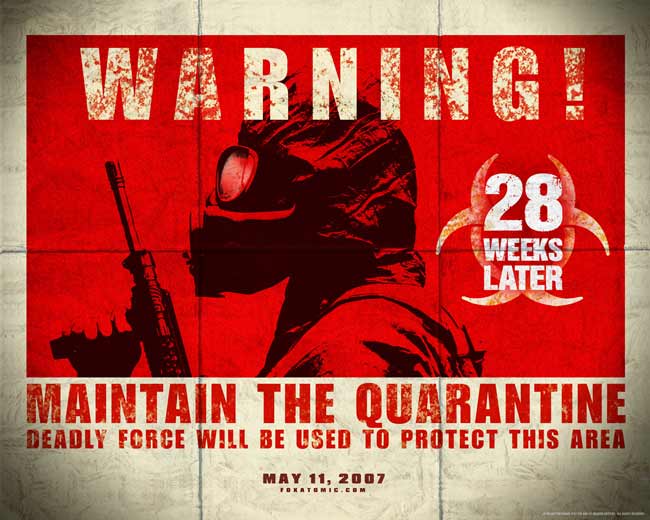How Hollywood Shapes Fears of Virus Outbreaks

Fear is contagious during a disease outbreak, as shown by survey last week finding that almost half of Americans worried that they or a family member could get sick from the "swine flu" virus of 2009. But it's all old news to Hollywood, which has long turned out movies that play on fears of infection and uncertainty.
"The way contagion is spread or the time in which it takes contagion to spread is greatly exaggerated in most fictional depictions of disease," said Sarah Bass, a public health researcher at Temple University in Philadelphia.
Bass gave an example in the zombie movies "28 Days Later" and "28 Weeks Later," where a virus infection produces instant symptoms — a stark contrast with reality. And even super-agent Jack Bauer on the television show "24" runs up against some scientifically dubious opponents.
"I have been watching '24' this season, and they have a 'prion variant' that begins to affect someone within hours," Bass told LiveScience. "Prion infection takes decades to produce symptoms, so these types of things, when seen multiple times in multiple formats, can blur public thinking."
Similar misconceptions about the spread of disease — not to mention exaggerated government responses that range from military-enforced quarantine to leaving people for dead — arise in many other movies ranging from "Outbreak" to "I Am Legend."
But movies may have once played a greater role in shaping how the public responds to disease, said Janet Golden, a medical historian at Rutgers University.
"Films used to scare people, but also inspire people to be physicians," Golden said. She noted that many old movies painted a picture of heroic doctors trying to find disease cures, and likely inspired many older physicians today.
Get the world’s most fascinating discoveries delivered straight to your inbox.
On the downside, Hollywood also used to depict disease as something carried by "other" people in foreign lands or minority groups, and not as something that could affect mainstream society. That attitude has changed with the diseases themselves over the decades, as seen in movies that came out around the start of the AIDS epidemic in the United States during the 1980s.
"I think some of the early HIV/AIDS films, TV and plays did a good job of saying let's not demonize people. Let's get to the issue of what can we learn and what can we treat," Golden explained.
Golden suggests that modern media and popular culture have done a better job of teaching the science behind microbes. That in turn allows the public to focus on the causes of disease, such as the swine flu's H1N1 virus strain, rather than stigmatizing the victims of disease.
"I know there's been a lot of talk radio saying, 'Let's close our borders,' but I think most people have been trained to say, 'Let's focus on the virus rather than the victims of the virus,'" Golden said.
- The Top 10 Infectious Movies
- 10 Deadly Diseases That Hopped Across Species
- More Flu News & Information

